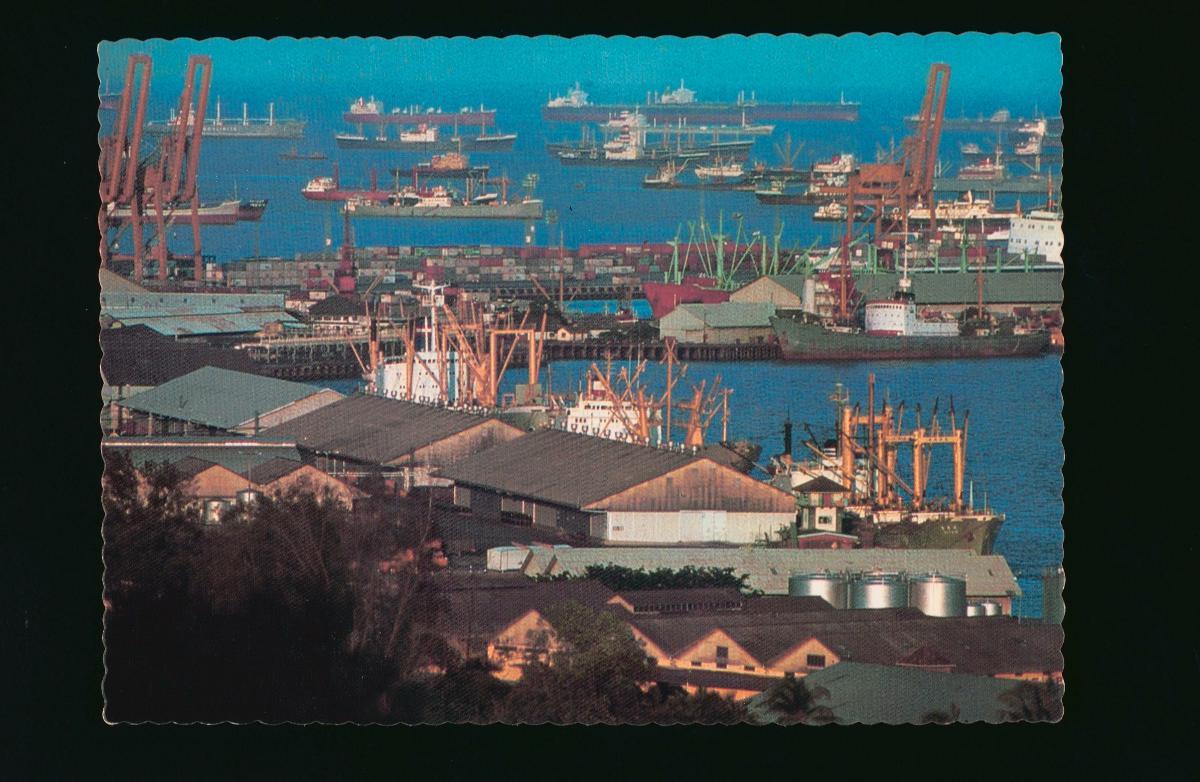9 Neil Road that was carried out by the URA. The Tanjong Pagar Dock Company 18641905 the forerunner of todays Maritime Port Authority was founded by Guthrie and Company and Tan Kim Ching.
With that we connected Singapore to the global economy and put ourselves on the world map as a leading hub port.

Tanjong pagar port history. The Rail Corridor linear parks starting point which will be at the old railway station at Tanjong Pagar that is situated close to the historical port terminal at Tanjong Pagar. In 1848 Captain Henry Keppel discovered the sheltered deep water harbour onboard the vessel Meander. Gilfillan Syed Abdullah Pochajee Pestonjee Wei Kow G.
To truly appreciate what it is today well have to look back into its colorful and interesting history. A period of prosperity began and construction of Port of Singapore facilities began anew. The 1950s Modern-style former Jing Hwa Cinema at 1 Tanjong Pagar Road was given conservation status on 25 Nov 2005 and adds to the variety of heritage buildings in the area.
Tanjong Pagar is a district located in the downtown southern tip of central Singapore. But thats far from the end of Tanjong Pagars growth story. This was not for container handling but rather a Guinness World Record for the largest container image a Singapore lions head mosaic in a kaleidoscope of colours derived from the.
The submerged history of Everton Park include difficult narratives surrounding port workers which should be revealed and celebrated as part of creating an inclusive history The Landscape Narrative. About five kilometers of wharves were constructed at Tanjong Pagar. OnThisDayin 1972we officially opened Tanjong Pagar Terminal the first container terminal in Singapore and Southeast Asia and welcomed the arrival of our first container vessel the MV Nihon.
Peter Leongvia Unsplash In 1819 when Sir Stamford Raffles came to strike a deal that made Singapore a British colony the. During the early years of the twentieth century many ornately decorated buildings were constructed along Blair Neil and Everton Roads. Today wooden huts by the sea have been replaced by tall.
On the Jun 23 1972 the newly-built Tanjong Pagar container port welcomed its very first container ship. Familiar places such. It was named after John Blair a senior officer with the Tanjong Pagar Dock Company in the 1880s.
Meaning cape of stakes in Malay Tanjong Pagar was once a small town by the shore home to fishermen as well as agricultural plantations. He owned land in the area and also had a substantial house nearer to the Port. The idea to form a company for the purpose of affording greater facilities for the repairing of vessels was first proposed by a group of men comprising F.
An area rich in history and culture Tanjong Pagar is a port district located within Singapores Central Business District thats also home to some of the tallest skyscrapers in the city state. An important milestone in Singapores maritime history was the birth of containerisation. That name remained until 1900 when Keppel then the Admiral visited Singapore again.
1 The once sleepy fishing village has been transformed into a vibrant business and commercial centre just 40 years after the founding of modern Singapore. Located at the southernmost tip of the island Tanjong Pagar was once a fishing village. The name Tanjong Pagar actually meant cape of barricade that was inspired by a.
Tanjong Pagar Terminal TPT - the icon of Singapores port heritage commemorated its role in history recently by setting a new record. As a major maritime port Tanjong Pagar played a significant role in Singapores history and after further modernisation it has become the heart of the Republics vibrant commercial centre. When the Malay states became British protectorates commercial traffic increased in the Port of Singapore.
Singapore quickly embarked on an industrialisation programme and capitalised on existing port infrastructure to serve the fledging economy. With the long weekend approaching the initial intention of this post was to feature Tanjong Pagar Railway station as a place to consider visiting over the weekend as its only open on Public Holidays. Tanjong Pagar Terminal was completed in 1972 and the country has not looked back since as we rode the wave of containerisation and developed our port in tandem with economic demands.
The port heritage landscape of Tanjong Pagar consists of workers housing of various hierarchies including Everton Park. It was also Southeast Asias first container port then. The lifeblood of Singapore since 1819 the district owes it success to early immigrants who under British rule helped establish Tanjong Pagar as an important centre for trade and commerce.
Tanjong Pagar received conservation status on 7 July 1989 and was the site of Singapores first urban restoration project at no. 2 Today Tanjong Pagar has one of the worlds leading and most modern container ports 3 and has been identified for. Repairs on the Meander were the first carried out in the harbour known as New Harbour where the Tanjong Pagar wharves would later be built.
The company was expropriated by the Government in 1905 who replaced it. Tanjong Pagar Dock Company Limited is established - Singapore History. As a major maritime port Tanjong Pagar played a significant role in Singapores history and after further modernisation it has become the heart of the Republics vibrant commercial centre.
In 1921 a naval base was established in the Port of Singapore. This trail that previously was the railway track will extend right up to the Woodlands district. History In 1863 Tan Kim Ching Singapores leading Chinese merchant at that time came up with 120000 to found and set up the Tanjong Pagar Dock Company the forerunner of todays Port of Singapore Authority purchased two steamships Siam and Singapore and promoted the Tanjong Pagar Dock Co.
However while searching for photos of the station I came across many old photos of Singapore which I have never seen. Tanjong Pagar Port in Singapore before it was closed.